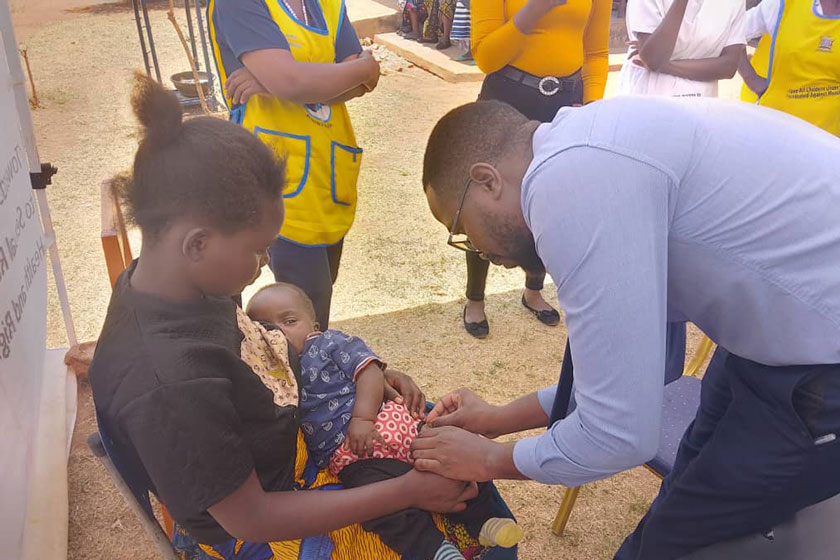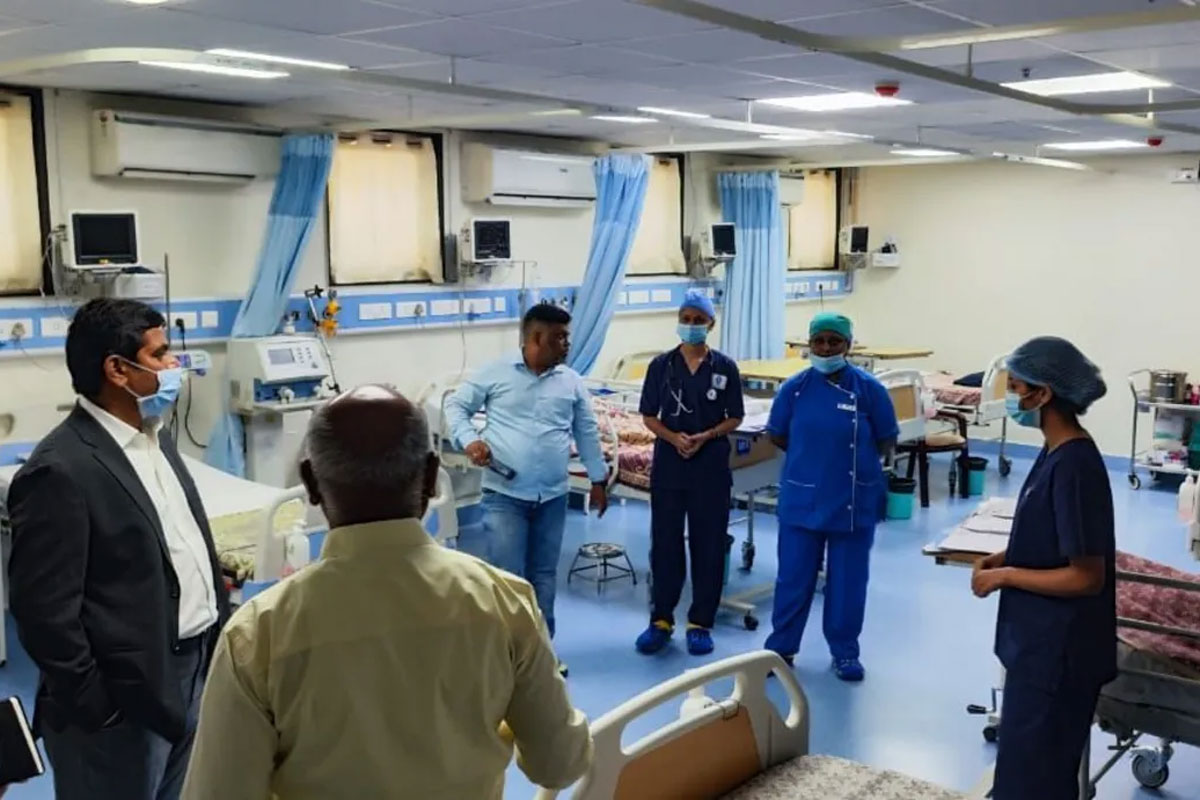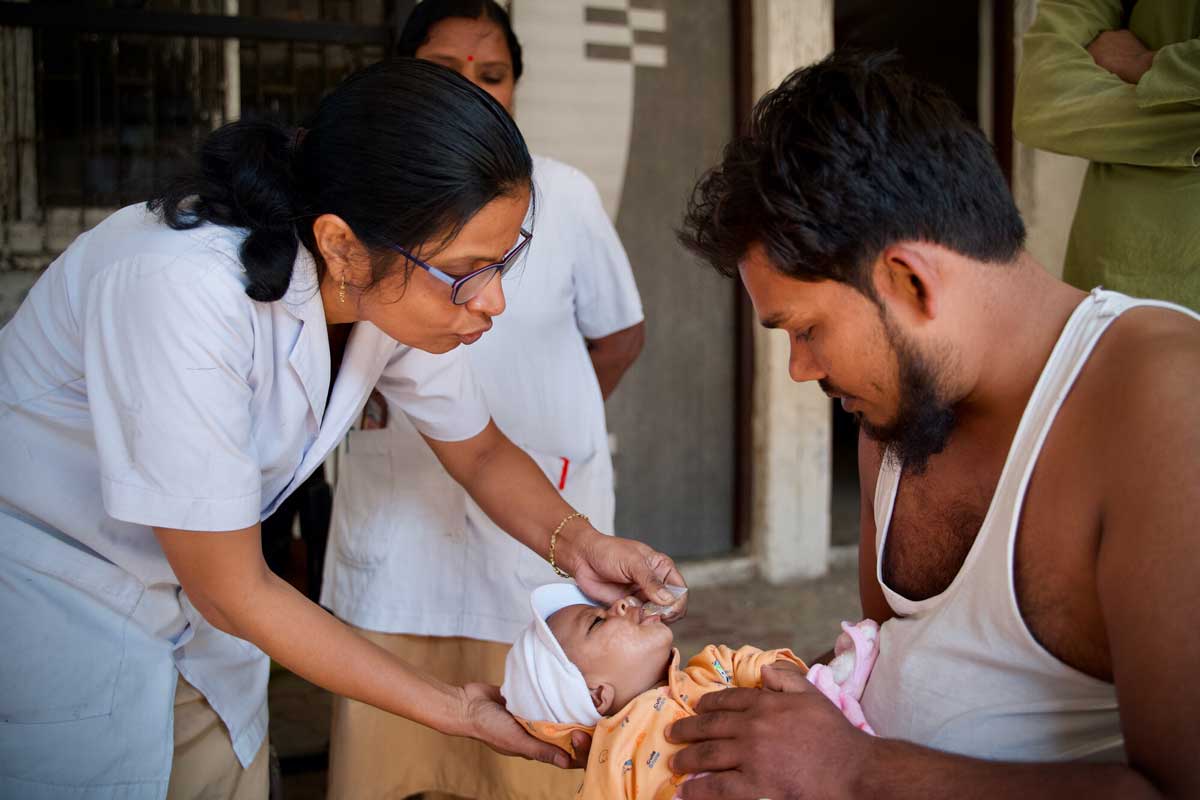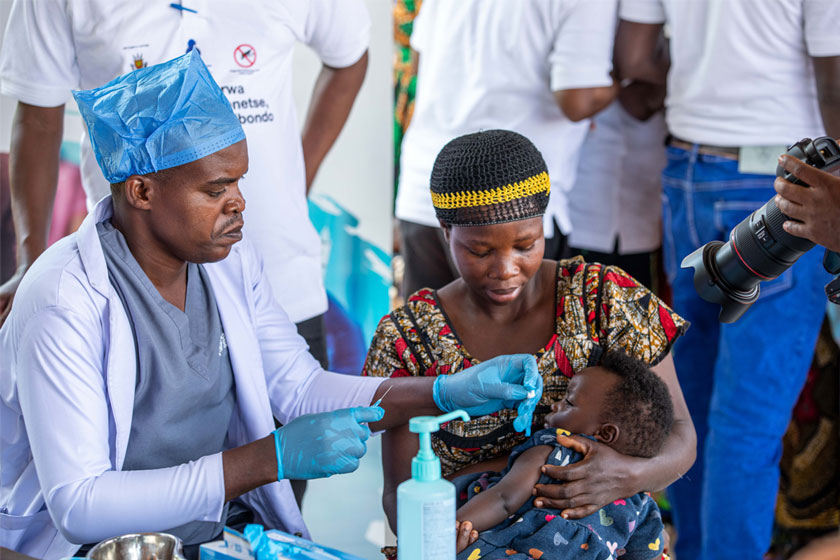Are we getting closer to the world’s first Nipah vaccine?
Phase 2 trials are set to kick off for a revolutionary Nipah vaccine candidate, with an “investigational reserve” of doses to be kept at the ready for future epidemics.
- 12 November 2025
- 7 min read
- by T V Padma

We may soon be a big step closer to having a vaccine against Nipah, an extremely deadly bat-borne virus for which there is currently no jab and no cure.
A three-way partnership between the Coalition for Epidemic Preparedness Innovations (CEPI), the University of Oxford and the Serum Institute of India (SII) is soon embarking on the world’s first phase 2 trial of a Nipah vaccine – in this case, the Oxford vaccine candidate, ChAdOx1 NipahB.
The partnership will also produce “an investigational reserve of up to 100,000 doses” of the same vaccine, which could be deployed under emergency use in a future outbreak.
Programming a biological Nipah cheat-code
“Preclinical research and preliminary safety evidence from a phase 1 trial of the vaccine candidate that is currently wrapping up in the UK has been positive,” Richard Jarman, Nipah programme leader at CEPI, told VaccinesWork.
His organisation will now provide up to US$ 7.3 million to support SII in process development and manufacture of the experimental vaccine – a vital, though costly, step on the lengthy, and thorough, experimental road.
Meet the candidate
ChAdOx1 Nipah is a viral vector vaccine. That’s a class of vaccines that doesn’t actually contain antigens – that is, the molecules or structures that trigger an immune response in the body – but rather, uses a harmless virus as a vehicle to transport instructions for making antigens into cells. Our own cells then manufacture the antigen based on the code the vaccine virus delivers. The body’s immune cells recognise the antigen as an invader, and mount an immune response – teaching the body how to catch and kill the pathogen that carries that same antigen in future.
ChAdOx1 – minus “Nipah” – is a non-replicating adenovirus platform used to transfer genetic instructions. You may recognise the name – it was used to make the University of Oxford/AstraZeneca COVID-19 vaccine.
Now the same platform has been reworked to carry the cheat-codes to defeat Nipah.
“The vector vaccine from Oxford University is more likely to be safe because it uses the ChAdOx1 platform, whose safety was tested not only in the lab but also in pragmatic community settings during the COVID-19 pandemic,” says Anish TS, professor at the Department of Community Medicine at the Government Medical College, Wayanad. Anish is also the Nodal Officer, Kerala One Health Centre for Nipah Research and Resilience, Kozhikode, and helped limit previous outbreaks of Nipah in Kerala state in southern India.
But will it really work? That’s what the trials are here to determine. So far, so good – but it’s early days yet.
The phase 2 trial will further assess the safety of the vaccine candidate, as well as its ability to trigger an immune response. Researchers will be testing both single and two-dose vaccination schedules in a larger pool of volunteers than the earlier phase 1 trial, Jarman says.
“Importantly, the trial participants will be based in a Nipah-affected region and, therefore, may have similar health statuses to the populations most likely to be receiving a Nipah vaccine if licensed in the future,” he says. “This tells us what might be expected when the vaccine is rolled out more widely.”
Deadly virus
The Nipah virus kills up to 75% of people it infects. First discovered in Malaysia in 1999, the majority of Nipah outbreaks have since occurred in India and Bangladesh. Bangladesh has seen outbreaks almost annually since 2001.
“The research on Nipah vaccines is very important because of the virus’s significant pandemic potential,” says Anish. For now, Nipah is still an animal virus, and human-to-human spread is rare, other than through hospital-based superspreading events and infection of close contacts, he explains.
“If an effective vaccine is ready by the time the virus accumulates favourable mutations for spreading easily among humans and is capable of creating big outbreaks, the vaccine could be used as an important strategy to stop the spread and save lives,” says Anish. “I think the chances of large Nipah outbreaks are high in the future because, even now, Nipah spillovers may be happening rampantly in Bangladesh, India, and their neighbouring countries, and the identified cases may be just the tip of an iceberg.”
“The completion of a phase 2 trial will put us one step closer to providing protection to those living in outbreak hotspots by assessing whether this vaccine candidate holds promise,” says Jarman.
Rising risk
“This is especially important as climate change alters habitats and could bring the Pteropus fruit bats that carry and spread the virus into contact with more people,” he says. Known Nipah hotspots currently cover just a small part of the range of the Pteropus fruit bat. These creatures are already found across regions of Africa, South Asia and Oceania, which suggests that more than two billion people could be living in areas at risk of Nipah.
Nipah vaccine research could also provide scientists with important clues for making vaccines against other viruses related to Nipah, adds Jarman. Nipah belongs to the paramyxovirus family, a group of 75 viruses that includes threats like the zoonotic Hendra virus, as well as measles and mumps. “Vaccine investigations into Nipah could add to our understanding of these viruses while also helping to prep us for a new paramyxovirus that we don’t yet know about,” says Jarman.
“If a virus emerged that was as deadly as Nipah and as contagious as the related measles, this could be very worrying indeed – and it is exactly why this kind of research is so crucial,” says Jarman.
Most of the countries in Southeast Asia have weak health systems, and spillovers could be missed easily, says Anish. Kerala in India may be picking up cases because of its strong surveillance system, and many other states may be missing it. “Each undetected spillover and outbreak is an opportunity for the Nipah virus to get exposed to human immune mechanisms and assimilate mutations to tide over the immunity,” he warns. Detecting the spillover early and limiting the outbreak by containing it limits such accumulation of mutations, and that is the importance of Nipah surveillance.
“So, there is a high possibility that we will face a future situation of outbreaks with a mutated Nipah virus developed through unchecked transmission of the virus from countries or communities that fail to recognise spillovers and small outbreaks,” says Anish. “The vaccine may be the only strategy by which we can manage that kind of a situation.”
Have you read?
Hurdles to clear
The path to a Nipah vaccine still has some challenges to face down.
The difficulty with Nipah is that outbreaks tend to be very small and sporadic, making it hard to run large-scale randomised controlled efficacy trials, explains Jarman. These are the types of studies that take place after phase 3 trials.
Nipah is still a rare disease with uncertain occurrence, and therefore, conducting a preventive field trial aimed at proving the protective efficacy of the vaccine “is almost impossible because we can't expect a case even in the unvaccinated arm due to the rarity of its occurrence,” says Anish.
“It could be attempted at high-risk zones, during outbreaks and all, but the statistical power will still be questionable,” says Anish.
“We’re, therefore, looking at other ways to collect this all-important data,” says Jarman. One option is to gather efficacy data using preclinical models (animal studies to test safety and immune response before testing in humans) to estimate a threshold of protection, which could then be used as an endpoint for trials looking at safety and immune response.
Another concern is the cost of the vaccine. As high-risk groups other than the general public may be more interested in being vaccinated, the cost of the vaccine could be high, Anish says.
These include healthcare providers, friends and family members of the infected people, and people residing in areas with a history of past or present spillovers. Mass immunisation could be planned among people living near Pteropus bats.
Including Nipah vaccination for high-risk groups in the national vaccination programmes or universal health coverage packages in vulnerable countries would be optimal, he says.
More data collection and analysis – that is, beyond safety, immunogenicity and efficacy of the vaccine candidate – is called for, Anish says. “Building surveillance systems in high-risk communities, extensive bat studies to demonstrate the presence of the virus widely in the environment, and costing studies to estimate the economic burden of the infections should go along with the vaccine studies to set the stage,” he adds.
More from T V Padma
Recommended for you








